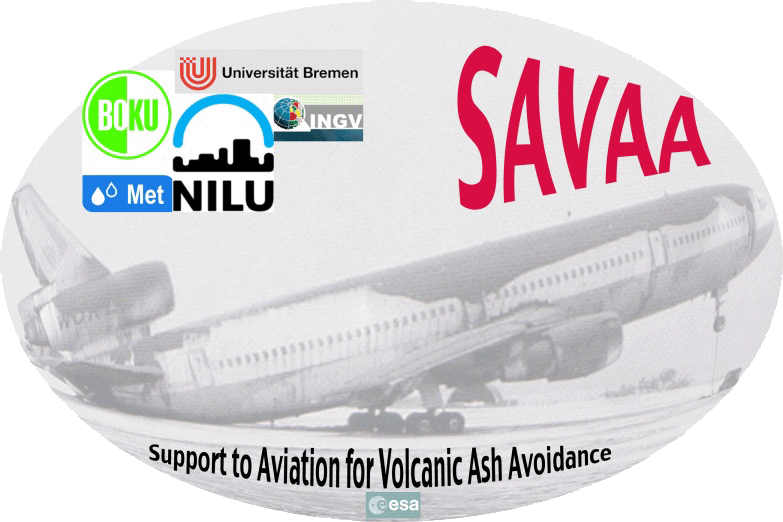|
|
The SAVAA and SACS ESA projects: A support to aviation control in case of strong volcanic eruptions ESA projects: a support to aviation control caused by volcanic activity Volcanic eruptions can emit large quantities of rock fragments and fine particles (ash) into the atmosphere, as well as several trace gases, such as sulphur dioxide (SO2) . Volcanic plumes constitute a hazard to aircrafts during flight. E.g., ash particles can severely damage the material of the aircraft and also limit the view of the pilots. Yet, eruptions are often difficult to predict, since many of the underlying natural processes leading to an eruption are still poorly understood. Moreover, fine volcanic ash and gases can be transported by winds over long distances (several 1000 km) from a volcano. Hence the plume may cross crowded air routes and poses a thread to the entire aviation sector in a given region, as it was the case e.g. during the Eyjafjöll European crisis in 2010. For all these reasons, the European Space Agency finances projects to detect, monitor and forecast of the dispersal of the ash emitted by volcanoes, in order to bring assistance to the Volcanic Ash Advisory Centres (e.g., London VAAC and Toulouse VAAC).Overview of SAVAA project Once an eruption has been notified, the volcanic plume being localized and determined for composition e.g. through satellite detection of ash or SO2, it is of paramount importance to predict the evolution of the plume and its ash content. The Support to Aviation for Volcanic Ash Avoidance (SAVAA) project aims to run state-of-the-art atmospheric dispersion models to forecast the path, the composition and the vertical extend of the volcanic cloud. The injection profile of volcanic emissions is a critical piece of information for the initialization of atmospheric dispersions models and is determined through assimilation of satellite observations.Overview of SACS project Satellite observations of SO2 and aerosols provide useful qualitative and quantitative information on the current state and the evolution of a given volcanic plume. Based on multi-satellite observations, the Support to Aviation Control Service (SACS) aims to provide (in near-real time) SO2 and aerosols data possibly related to volcanic emissions, and in case of an eruption to send an alert to interested users (notably the VAACs). |
Last update on 09 Dec 2010




